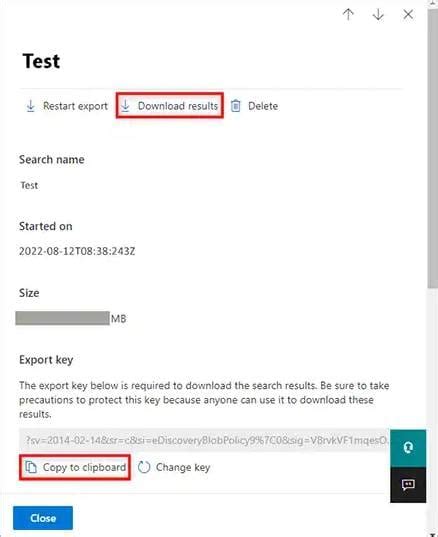How to Download Export Files from eDiscovery Platforms
eDiscovery platforms are crucial for managing and analyzing large volumes of data during litigation or investigations. But knowing how to efficiently download your exported files is equally important. This guide outlines the process, focusing on common export formats and best practices for a smooth download experience. We'll cover various scenarios and troubleshooting tips to help you successfully retrieve your exported data.
Understanding eDiscovery Export Formats
Before diving into the download process, it's crucial to understand the different export formats available. The specific options will depend on your eDiscovery platform, but some common formats include:
- CSV (Comma Separated Values): Ideal for structured data, easily imported into spreadsheets.
- PST (Personal Storage Table): A proprietary Microsoft Outlook format, useful for exporting emails and calendar data.
- PDF (Portable Document Format): Best for preserving document formatting and ensuring consistent viewing across different systems.
- Native Format: This preserves the original file format (e.g., .docx, .pdf, .msg). Choosing this option retains all original metadata and formatting.
- TIFF (Tagged Image File Format): Commonly used for images, ensuring high-quality preservation.
- JSON (JavaScript Object Notation): A human-readable format, especially useful for structured data and APIs.
- XML (Extensible Markup Language): A flexible format for exchanging structured data between different systems.
Steps to Download Your Exported Files
The exact steps vary depending on the specific eDiscovery platform you are using. However, the general process usually involves these steps:
-
Locate the Export Function: Within your eDiscovery platform, navigate to the section related to data export. This is usually found under "Export," "Download," or a similar menu option.
-
Select the Desired Export Format: Choose the format most suitable for your needs based on the information above. Consider the downstream use of the data – is it for analysis in a spreadsheet, review by legal counsel, or archival purposes?
-
Specify Export Settings: Some platforms allow you to customize export settings. This might include:
- Date Range: Selecting a specific time frame for the exported data.
- Custodians: Specifying which users' data to include.
- Keywords: Filtering the data based on specific search terms.
- File Types: Narrowing down the export to specific file types.
-
Initiate the Export: Once you’ve configured your settings, click the "Export" or "Download" button to begin the process.
-
Monitor the Export Progress: Larger datasets can take considerable time to export. Most platforms offer a progress bar or notification system to track the export's status.
-
Download the Exported Files: Once the export is complete, you'll usually receive a notification, and a download link will become available. Click the link to download the compressed file (usually a .zip file) containing your exported data.
-
Extract the Files: After downloading, extract the contents of the compressed file using a file compression tool (like WinRAR or 7-Zip).
Troubleshooting Common Download Issues
- Slow Download Speed: Large exports can take time. Ensure a stable internet connection and try downloading during off-peak hours.
- Download Failure: Check your internet connection and try again. If the issue persists, contact your eDiscovery platform's support team.
- File Corruption: Verify the file integrity after downloading. If corrupted, contact support for assistance.
- Incorrect File Format: Double-check your selected export format and ensure you have the necessary software to open it.
Best Practices for eDiscovery File Downloads
- Plan Ahead: Large exports can take a significant amount of time. Schedule exports in advance, especially for critical deadlines.
- Test Exports: Before exporting large datasets, test with a smaller sample to verify the settings and format are correct.
- Proper Storage: Use a reliable storage solution to save your exported files, ideally with backups to prevent data loss.
- Security: Be mindful of the security of your exported data. Consider encryption and access controls.
By following these steps and best practices, you can efficiently download your exported files from your eDiscovery platform, ensuring a smooth workflow and secure data management. Remember to always consult your specific platform's documentation for detailed instructions.
